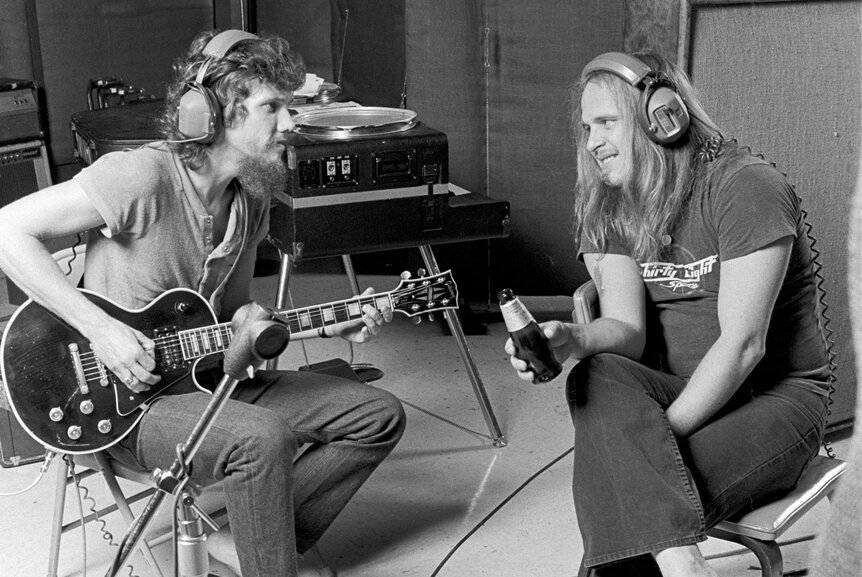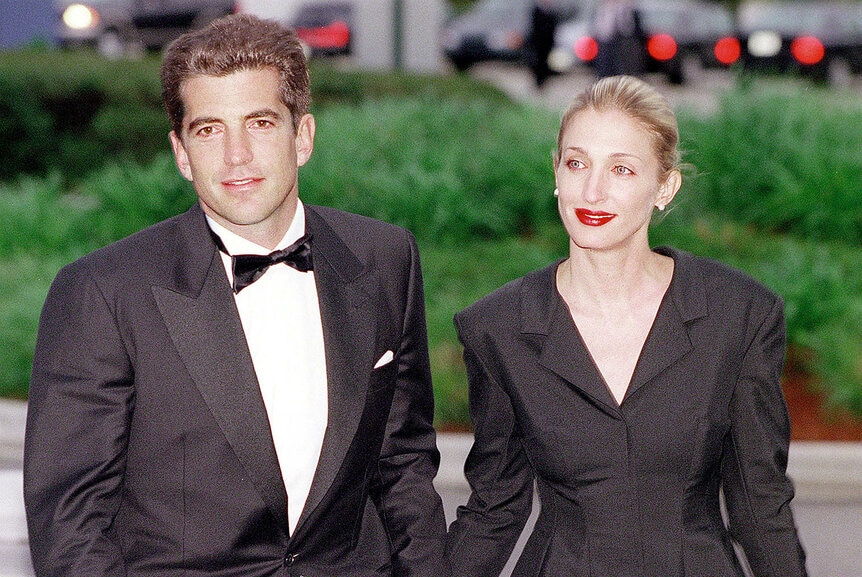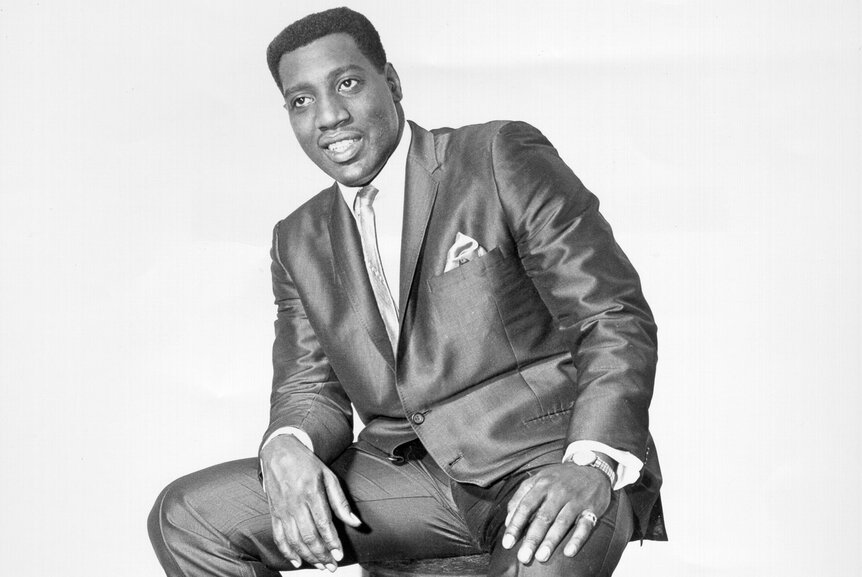Create a free profile to get unlimited access to exclusive videos, breaking news, sweepstakes, and more!
Jenni Rivera Wasn't The Only Celebrity To Die In A Tragic Plane Crash
The Latin music superstar's death in an unsolved 2012 plane crash is explored in the new Peacock docuseries 'Who Killed Jenni Rivera?" But hers is far from the only tragic celebrity plane crash.
The tragic death of Latin music superstar Jenni Rivera is the subject of the new docuseries "Who Killed Jenni Rivera?" by Peacock and Telemundo, which explores the mysteries and theories behind the tragic 2012 plane crash that ended her life.
As viewers of the docuseries learn, Rivera's plane left Monterrey, Mexico en route to the Mexico City area on Dec. 9, 2012 — after she finished performing in Monterrey — on a 1969 Learjet that had previously been involved in a collision on a tarmac, CNN reported. The American-tagged aircraft, which would normally not have been allowed to fly paying passengers between two foreign destinations, was being used as part of a free promotion by its owner, Starwood Management, which said it wished to sell the plane, according to USA Today.
It disappeared from tracking system 10 minutes after takeoff, after reaching an altitude of 28,000 feet. Mexican authorities said that the plane began to nosedive after reaching altitude and traveled only a mile and a half before it struck the ground at an 89 degree angle at approximately 621 mph, according to UPI and USA today. The plane all but disintegrated on impact, killing all those on board. The flight recorder was reported destroyed in the crash, according to the Latin Post.
RELATED: Did A Boeing Design Flaw And Corporate Greed Lead To The Deaths Of 346 People?
Without the black box and other evidence, the cause of the crash was never determined.
But Rivera was neither the first or the last celebrity to lose her life in a plane crash at the height of her fame. Though increasingly rare over the decades, many celebrities have lost their lives while utilizing small aircraft.
Buddy Holly, Ritchie Valens and "The Big Bopper" J.D. Richardson
The three musicians boarded a 4-seater Beechcraft 35 Bonanza just after midnight on Feb. 3, 1959 in Mason City, Iowa, bound for Fargo, North Dakota — a relatively last minute decision to avoid a second 350-mile bus trip in two days on a poorly-planned concert tour.
The plane was captained by a 21-year-old pilot, Roger Peterson. Neither the pilot, nor the company for whom he worked, was cleared to fly planes by instruments only, and the night was both dark and cloudy.
Peterson stopped communicating with the tower five minutes after his 12:55 a.m. departure, and another pilot discovered the crash site at 9:30 a.m. that morning, less than six miles from the airport. All four men had been killed instantly when a wing hit the ground at 170 mph, sending the plane cartwheeling across a farmer's field.
Their deaths were later memorialized in the Don McLean song "American Pie" as "the day the music died."
Aaliyah
The multiplatinum recording artist and emerging movie star was just 22 years old when she died in a plane crash on Aug. 25, 2001.
She had just finished filming the video for her new single, "Rock the Boat," in the Bahamas ahead of schedule, and chartered a plane to take them back to the United States early. However, the Cessna 402 was smaller than the plane she and her seven-person team had taken to the island.
The plane crashed just 200 feet into the flight and caught fire, killing everyone on board. Aaliyah was determined to have suffered head trauma, severe burns and traumatic shock. The plane was ultimately found to have been 700 pounds (and one person) over its certification weight, and drugs and alcohol were found in the system of the pilot, who had falsely obtained his license.
Lynyrd Skynyrd Members Ronnie Van Zant, Steve Gaines and Cassie Gaines
The band Lynryrd Skynyrd, as well as a significant portion of their crew, boarded their regular Convair CV-240 airplane after performing in support of their album "Street Survivors" in Greenville, South Carolina on Oct. 20, 1977. They were on their way to perform a concert in Baton Rouge, Louisiana, but never made it.
Instead the 30-year-old plane, which reportedly had malfunctioning fuel gauges, crashed in the woods near Gillsburg, Mississippi after running out of fuel. Lead singer Ronnie Van Zant, guitarist Steve Gaines, backup singer Cassie Gaines, assistant road manager Dean Kilpatrick, pilot Walter McCreary and co-pilot William Gray were all killed when the plane smashed directly into a tree.
Due to the lack of fuel, as well as the speed and height of the plane at the moment of impact, 20 people survived, although many had serious injuries.
John F. Kennedy Jr. and Carolyn Bessette Kennedy
Kennedy was at the helm of a 6-seater Piper Saratoga he'd just purchased when he, his wife, Bessette Kennedy, and her sister, Lauren Bessette, took off from the Essex County Airport in Fairfield, New Jersey at around 8:40 p.m. on July 16, 1999 bound for Martha's Vineyard.
An hour later, radar showed that it descended from 2,200 feet to 1,100 feet in just 14 seconds — faster than its safe maximum — and disappeared. The wreckage of the plane was found on the sea floor just eight miles from Martha's Vineyard. All the passengers were still strapped into their seats, and their causes of death were determined to be a result of the crash. The plane hit the water at a nearly 90 degree angle.
The crash was determined to be a result of pilot error: Kennedy was not rated for flight using instruments only, and conditions around Martha's Vineyard were hazy on the night of the crash, resulting in what investigators believe was spatial disorientation.
Otis Redding and The Bar-Keys
Otis Redding and the members of his band, The Bar-Keys — guitarist Jimmy King, tenor saxophonist Phalon Jones, trumpet player Ben Cauley, organist Ronnie Caldwell and drummer Carl Cunningham — boarded Redding's 11-seat Beechcraft H18 in Cleveland on the morning of Dec. 10, 1967 with their valet, Matthew Kelly, and pilot Richard Fraser. (Their bassist, James Alexander, dropped them at the airport, returned their rental car and hopped a commercial flight later that day.) They were headed to play a show in Madison, Wisconsin.
Instead, flying in poor conditions, the plane crashed in Lake Monona — just three miles from the Madison airport — shortly after receiving permission to land. Cauley, the sole survivor, told the Memphis Commercial Appeal in 2007 that the plane began shaking, waking him up and Jones, sitting by a window, said "Oh no!" Cauley unbuckled his seatbelt and got up to look just as the plane hit the water at a 35 degree angle. Unable to swim, he was gripping a seat cushion when he came to in the frigid waters, and saw Kelly, Caldwell and Cunningham all surface and then go under.
He was rescued less than 20 minutes after the crash, suffering from hypothermia. There were no other survivors and the cause of the crash was never determined.
Payne Stewart
Pro golfer Payne Stewart took off from the Orlando airport in a chartered Learjet 35 at 9:20 a.m. ET on Oct. 25, 1999 with business associates Ivan Ardan, Bruce Borland and Robert Fraley on a plane piloted by Michael Kling and Stephanie Bellegarrigue. They were headed to Dallas but, just 25 minutes into the flight — as the plane was over Gainesville, Florida and gaining altitude as directed by air traffic control — all contact from the plane ceased.
The plane continued to gain altitude, ultimately reaching 48,900 feet, and travel in a northwestern direction until it ran out of fuel over South Dakota and crashed four hours later. Three different military escorts intercepted the plane over the course of its flight, finding the cockpit dark and the windows iced over. They watched as the plane began to rapidly lose altitude at 12:11 p.m. CT, rolling multiple times. It impacted the ground at supersonic speeds and at close to 90 degrees, destroying most of the plane.
Investigators determined that the cabin lost pressure for undetermined reasons and the flight crew became incapacitated after failing to gain access to supplemental oxygen.
Patsy Cline
Patsy Cline, Cowboy Copas and Hawkshaw Hawkins and her manager, Randy Hughes (who was Copas' son-in-law) departed Kansas City in Hughes' 4-seater Piper Comanche around 2:00 p.m. on March 5, 1963 after the commercial flight to Nashville on which they had been booked was cancelled due to inclement weather.
Hughes, who was only rated to fly under visual flight rules, stopped to refuel in Rogers, Arkansas and then stopped in Dyersburg, Tennessee — 150 miles west of Nashville — shortly before sunset for the same reason. He was advised that local conditions were marginal for pilots without instrument ratings, and conditions in Nashville required an instrument rating. The plane took off anyway at 6:07 p.m. and crashed in a wooded area near Camden, Tennessee — about halfway to Nashville — at 6:29 p.m.
The wreckage was discovered the following morning. A subsequent investigation concluded that Hughes began suffering from spatial disorientation above low cloud cover, and began diving to the right at a 25 degree angle. He recovered his orientation when the plane went below the clouds, but was unable to pull up in time to avoid clipping two trees just 30 feet above the ground, which caused the plane to invert. The upside-down plane hit the ground at 175 mph at a 45 degree angle, killing everyone on board.
Roberto Clemente
Roberto Clemente, then a star player for the Pittsburgh Pirates, boarded a Douglas DC-7CF cargo-style plane on Dec. 31, 1972 in San Juan, Puerto Rico as part of a charity mission to bring relief supplies to Nicaragua following a pre-Christmas earthquake. He chartered the plane from American Air Express Leasing, a local company owned by 27-year-old Arthur Rivera, not knowing Rivera had a history of safety violations or that the plane had undergone only cosmetic repairs in the six months since Rivera bought it (despite the plane being involved in a runway crash earlier that month).
With Jerry Hill — the only person licensed to fly the aircraft — in the pilot's seat, Rivera in the co-pilot's seat and an unlicensed mechanic sitting in the flight engineer's seat, the overloaded plane took off at 9:20 p.m. with Clemente and his associated Angel Lozano on board. The plane almost immediately failed to gain enough altitude and Hill radioed three minutes later that they were returning to the airport. Less than a minute later, the plane crashed into the ocean about 1.5 miles offshore. The wreckage of the plane was only recovered on Jan. 7.
Only Hill's body was ever found. Investigators ultimately determined the crash was a result of two engines failing as a result of inadequate inspection and maintenance, as well as unqualified crew members.
John Denver
John Denver bought a two-seater Rutan Long-EZ plane — which had been built from a kit by its seller — shortly before his fatal flight on Oct. 12, 1997. He left the Monterey Peninsula Airport that afternoon to practice taking off and landing in it, and successfully performed the maneuver three times before he crashed into the ocean at 5:28 p.m. PT.
Investigators ruled that the crash was a result of pilot error, which occurred when he attempted to switch fuel tanks via a handle that was inaccessible without turning completely around from the cockpit. They believe that, in turning around to pull the handle, he inadvertently pressed down on the right rudder, causing the plane to bank sharply and resulting in a loss of control.
Though Denver had significant flying experience, he was not medically cleared to fly at the time of the accident due to a previous drunk driving conviction.
Melanie Thornton
Thornton, a South Carolina native, was one-half of the hit-making Eurodance group La Bouche in the 1990s, and was touring in support of her first solo album "Ready To Fly" when she was killed in a commercial airliner crash in Zurich on Nov. 24, 2001.
Thornton had boarded the Crossair flight in Berlin. It crashed into a hill less than three miles from the runway in Zurich and caught on fire, killing the pilot, co-pilot, one of the three flight attendants and 21 of the 28 passengers on board, including Thornton and two members — Nathaly van het Ende and Maria Serrano Serrano — of the Eurodance group Passion Fruit. The accident was ruled a result of pilot error, exacerbated by an inexperienced air traffic controller and a lack of various precautions for use of the runway to which they were assigned.
Jim Croce
Croce, his bandmate Maury Muehleisen, their manager Kenneth D. Cortese, road manager Dennis Rast, comedian George Stevens and the plane's pilot, Robert Elliott, took off from the Natchitoches Regional Airport in Louisiana at around 10:45 p.m. on Sept. 20, 1973 in a small Beechcraft E18S.
They clipped a pecan tree near the end of the runway and crashed, killing everyone on board. Investigators blamed the crash on the pilot's failure to see the tree, which was due to physical impairments and fog at the scene. Other investigations conducted as part of a lawsuit by the Cortese family concluded that the pilot might have suffered a coronary event at takeoff, and that the southbound departure he used was a "black hole" at night that could have caused spatial disorientation.
The city of Natchitoches cut down the pecan tree after the crash, according to the Monroe, Louisiana News Star.
